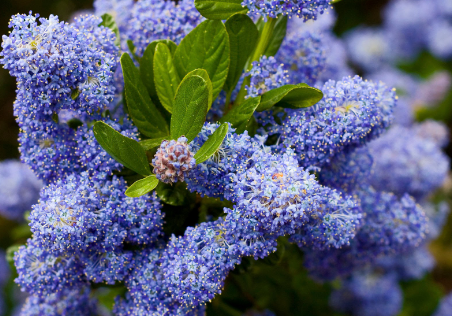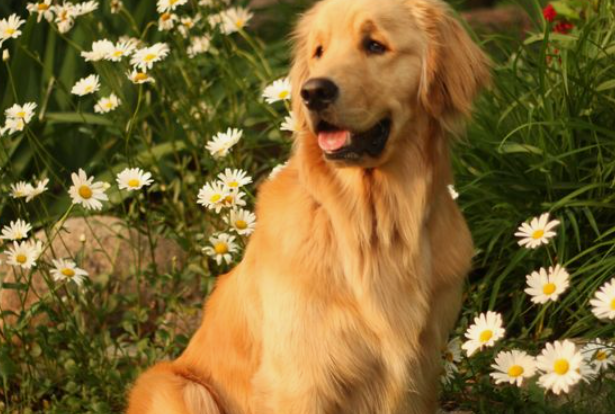Table of Contents
A plant that is known to increase the aesthetics of the garden and add stunning purple and blue blossoms is known as Ceanothus. However, certain studies claim that Ceanothus cuttingsshould not be present in your garden.
According to them, it’s a toxic plant that can cause your furry friend gastrointestinal issues if ingested. It’s been debated that this plant can only make your dog sick if they are ingested in large quantity. Otherwise, it’s a plant that has been serving people with medical benefits and curing anemic patients who have spleen and liver problems.
In this comprehensive guide, we will be unraveling dog safety precautions that will help you get to know the plant better and how it can be used to the benefit of your pet. Knowing the dangers that are present in your garden is the need of the hour for pet ownership.
Different Varieties of Ceanothus

There is a plethora of ceanothus plants that are present, and hence, gardeners group them into one singular name known as wild lilac or California lilac. Some of the notable mentions of this plat group are present as follows :
- Canethus americanus: They are referred to as New Jersey tea and are famous for their pale green bloom. They are called New Jersey tea because they were used as an alternative to tea when the Revolutionary War in America took place.
- Ceanothus griseus: Commonly called Carmel creeper, it is a shrub that is known for its light blue bloom. Gardeners and farmers use them to improve the garden’s aesthetics and create stunning visuals.
- Caenothus impress: Known as Santa Barbara Ceanothus, these are native California plants with a deep violet boom. They are commonly used as a xeriscaping plant that eliminates any need for irrigation.
- Ceanothus thyrsiflorus: Also known as the Blue blossom, it is the most widely used plant in America. They are the hot favorite among gardenists and farmers due to their functional use. They are grown as ground cover and shrubs.
- Ceanothus arboreus: Known as Feltleaf Ceanothus, they are known for their evergreen foliage and pale blue bloom. These are plants that can grow really tall, and they are most used for screening and hedging.
Designing a Safe Garden for a Furry Friend

There are certain things that you should consider while creating a pet-safe garden. Following this consideration will ensure that your dog doesn’t come in contact with ceanothus varieties and develop ceanothus poisoning. They are stated as follows :
1. Choosing the Right Variety of Ceanothus
New Jersey tea and blue blossoms are the least toxic of the Caenothus variety. This means even if the dog ingests them in excess, there would be no severe symptoms like vomiting, diarrhea, drooling, lethargy, and loss of appetite.
2. Taking Landscaping Seriously
Accidents happen with pets since the garden owners take landscaping lightly. This can happen when gardeners opt for pet-friendly plants like Petunia, lipstick plants, Zinnia, and Bromeliadas.
3. Awareness Planning
A lot of times, gardeners are lazy, and they don’t perform a thorough inspection of their garden. Due to this negligence, there are a lot of plants with missing leaves. This indicates that plants have been seriously damaged. When your pets gain access to these plants, they become sick.
4. Behavior Planning
Incorporating behaviors like “ drop it” and “ leave it” are some of the training methods that every pet owner must incorporate. Give them a reward when they listen to you. This will instill the mindset in your pet that if they listen to your command, they will be rewarded.
5. Get A Specialist
There are a lot of specialists available today that will advise you on having a clean outdoor space that is safe for pets. If you can’t decide by your research which plants you should keep and which ones to discard, then get help from them.
6. Don’t Miss Checkups
You can monitor your dog’s moments when you are with them, but when you aren’t physically present, this becomes difficult. During such scenarios, we would advise you to perform checkups with a veteran who would provide proper guidance for your pet’s health.
7. Fencing
If you can’t control your dog’s behavior and you constantly see your dog ingesting toxic plants and causing health problems for themselves, it’s best that you create fencing to protect them. Make sure the fence is deep and high enough so that your dog cannot jump over it or dig below it
8. Pest Control
During pest control, many chemicals are exposed to keep your plants safe. Thus, choosing an organic pest control would help you create a safe environment for your pet. Follow instructions for pesticides when you are using them and keep them out of there when using them.
9. Distractions
A dog can be well settled when it has plenty of toys to play with. When your pet is continuously engaged in an activity, it’s less likely that they will chew or ingest plants that are harmful to them.
Additional Tip: When these precautions mentioned above are followed religiously, we are sure that you will able to create the best outdoor environment that your canine companion will love and appreciate.
Final Takeaway
From the above information, it is safe to say that Ceanothus cannot be regarded as a “ toxic plant “ as they are used for medical purposes and has other health benefits.
Yes, some of the ingredients of the plant can cause gastrointestinal issues for dogs, so it’s best to keep them away from your pet. Hence, Caenothus is toxic to dogs, but it also depends on the variety of the consumed plant species and the amount of which is combined.





